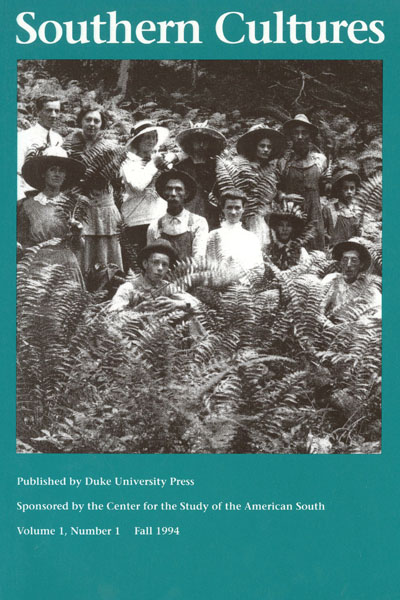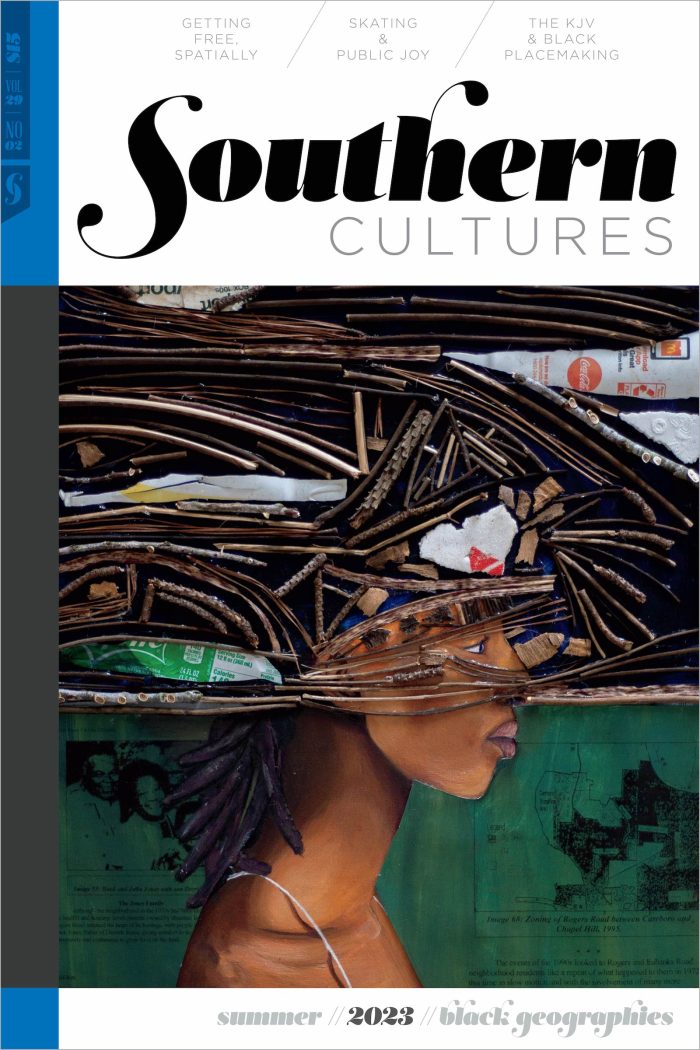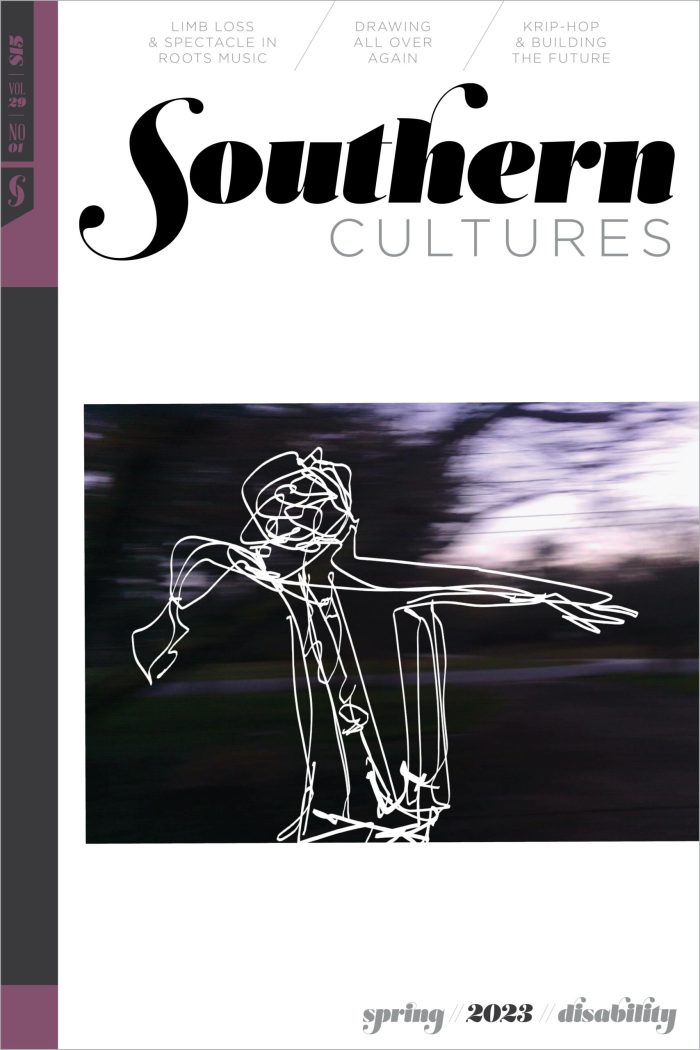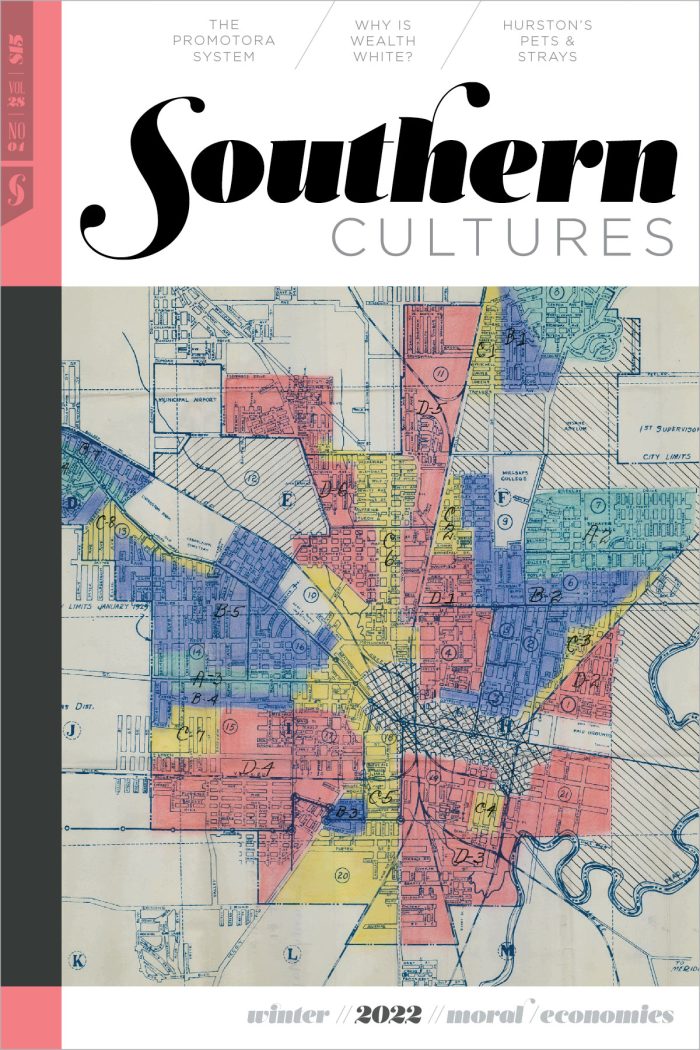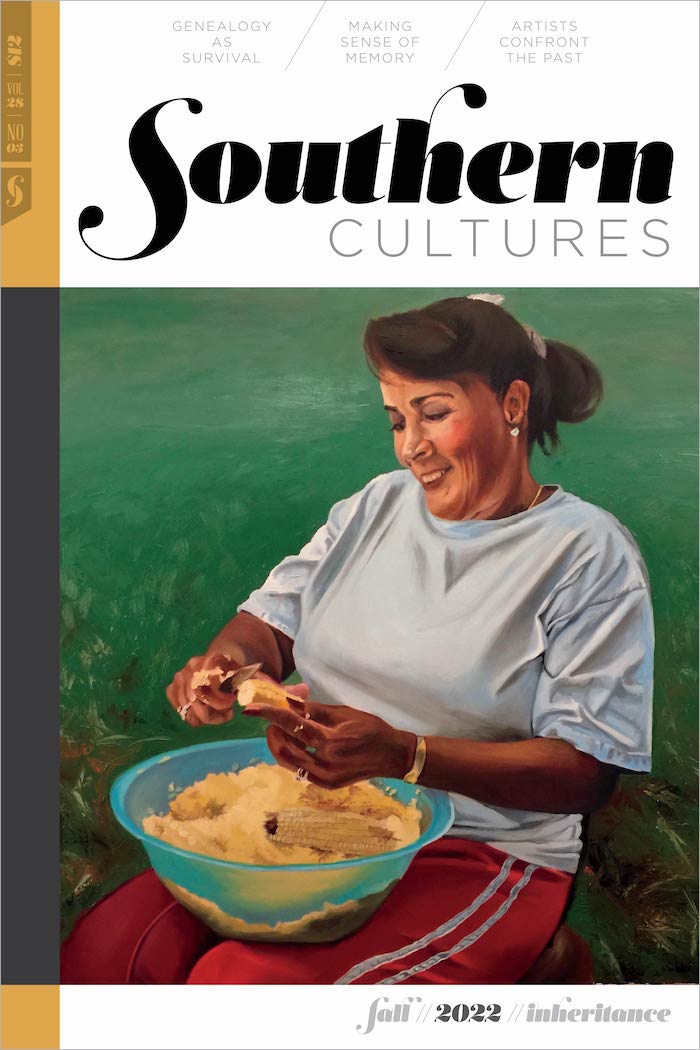BUY ACCESS
by John Shelton Reed,
Harry L. Watson
“If this is your first look at Southern Cultures, we’re glad you’ve joined us. If you’re paying us a return visit, welcome back.” What is the “real” South? Is there any such thing? Rival images jostle each other in popular imagery: the tall-columned Big House and the dog-trot cabin, the lynch mob and the civil »
BUY ACCESS
by Charles Reagan Wilson
“Public ritual, including funerals for prominent regional figures, nurtured the growing popular belief in a southern cultural identity.” Despite pronounced divisions and decades of change, the South and southerners have sustained their identity through institutions, customs, and rituals. Funerals for public leaders and cultural heroes are among the most significant. They affirm the community’s values »
Photo Essay
Southwestern Virginia through the Lens of T. R. Phelps
by David Moltke-Hansen
“Phelps’s images hold a kind of interest and value that a stranger’s cannot.” Editor’s Note: Since this piece was first published in 1994, the T.R. Phelps collection has moved from Emory & Henry College back to private ownership. The work of T.R. Phelps still remains largely untapped by scholars. The camera work of T. R. »
BUY ACCESS
by Pamela Grundy
“Like many other flights of booster fancy, the predictions for WBT would gradually descend to earth.” On the evening of 27 April 1922, the sweet, romantic notes of Jules Massenet’s “Pleurez, mes yeux,” sung by Miss Kathleen Culbertson of the Carolina Concert Club, emanated from the Chamber of Commerce assembly hall in Charlotte, North Carolina, »
BUY ACCESS
by John Herbert (Jack) Roper
“What did the Southern Literary Renaissance look like and feel like in the 1920s?” What did the Southern Literary Renaissance look like and feel like in the 1920s? There are images from the offices of Paul Green’s short-lived “little magazine” the Reviewer, distinctive images that survive the ensuing decades and stretch back to a vanishing »
BUY ACCESS
by Edward L. Ayers
Exhibition at the Museum of the Confederacy, Richmond, Virginia, through April 1995. The battle flag of the Confederacy continues to fly over scenes of tumult and conflict. It turns up at Ole Miss football games, over the Georgia capítol, at German political rallies, and in Harvard dorm rooms. Laid end to end, recent newspaper discussions »
BUY ACCESS
by Peter H. Wood
University of Nebraska Press, 1993 It has been two generations since Verner W. Crane published The Southern Frontier, 1670-1732 (1928). Sparked by a master’s seminar with Frederick Jackson Turner, Crane used English and colonial sources to create a path breaking study of southeastern trade and politics between the founding of Carolina and the beginning of »
BUY ACCESS
by Gwendolyn Midlo Hall
Louisiana State University Press, 1992 Gwendolyn Midlo Hall has written an impressive and wide-ranging book based on research in archives in Africa, America, and Europe. Africans in Colonial Louisiana is a major contribution to the history of black Americans and the study of slavery in the Americas. This book, like Michael Mullins’s two studies, Flight »
BUY ACCESS
by Karen Trahan Leathem
Louisiana State University Press, 1992 Through the lens of race, Creole New Orleans explores a city that is in many ways unlike the rest of the South, yet inextricably embedded in it. In a remarkably cohesive collection of essays, the authors advance from the colonial period to the present with broad strokes, illuminating odd twists »
BUY ACCESS
by John Rashford
University of Tennessee Press, 1992 When I read of the publication of this book, I immediately sent for a copy. When it came, I read it with great interest and I was not disappointed. It will be welcomed by many, because little systematic information has been published on African American gardens and yards. However, this »
BUY ACCESS
by Thomas W. Hanchett
University of North Carolina Press, 1993 All too often, architecture buffs interested in the plantations of the pre -Civil War South have focused only on the grand homes of the planters. Early in this century, when local landmark groups began moving to preserve important structures from the era of slavery, they saved the mansions but »
BUY ACCESS
by Charles Joyner
Louisiana State University Press, 1993 More than twenty years ago, a young assistant archivist at the Louisiana State University Archives brought an unusual document to the attention of Winthrop Jordan, a visiting historian. A cover note said “these four sheets of paper” were “the literal, original testimony taken down” by Lemuel P. Connor regarding an »
BUY ACCESS
by Stephen Kantrowitz
University of North Carolina Press, 1992 In this insightful and clearly written volume, William A. Link brings into focus a central theme in the history of American reform: the conflicts arising from cultural gaps between would-be reformers and those they are trying to help. This is not a comprehensive study of southern Progressivism but an »
BUY ACCESS
by Wayne Martin
1/2-inch video, 28 minutes, color. Appalshop Inc., 306 Madison Street, Whitesburg, KY 41858. Step Back Cindy takes the viewer to places in southwestern Virginia where mountain communities still gather to dance: a school gymnasium in Fancy Gap, the fire station in Dante, a Lion’s Club in Chilhowie, and an outdoor rally in St. Paul sponsored »
BUY ACCESS
by Alphonse Vinh
Louisiana State University Press, 1992 On 13 January 1940 the French philosopher Jacques Maritain, his wife Raîssa, and his sister-in-law Véra Oumansoff arrived at the port of New York. They were among ten thousand French nationals who found themselves expatriated to the New World as the Old World disintegrated in the flames of war. Fugitives »
BUY ACCESS
by Jacqueline Jones
University Press of Virginia, 1993 Unheard Voices introduces five pioneering scholars of the history of southern women to a modem audience, with essays (originally published between 1928 and 1941) by Virginia Gearhart Gray (1903-71), Marjorie Stratford Mendenhall (1900-1961), Julia Cherry Spruill (1899-1986), Guion Griffis Johnson (1900-1989), and Eleanor M. Boatwright (1895-1950). Anne Firor Scott’s introduction »
BUY ACCESS
by Kathleen C. Berkeley
University of Missouri Press, 1993 Southern Women: Histories and Identities has a history. In June 1988 the Southern Association for Women Historians sponsored its first Southern Conference on Women’s History at Converse College in Spartanburg, South Carolina. Although the organizers anticipated that the conference would draw participants whose research reflected all aspects of women’s history »
BUY ACCESS
by Trudier Harris
1/2-inch video, 58 minutes, color. California Newsreel, 149 Ninth Street, No. 420, San Francisco, CA 94103. As the title suggests, this video focuses on the song that became the anthem of the civil rights movement. The film shows, however, that “We Shall Overcome” has a history in civil struggle that reaches far beyond the 1960s. »
BUY ACCESS
by George W. Noblit
University Press of Virginia, 1992. Almost twenty years ago, I started studying school desegregation. In Memphis, doing an ethnography of a high school caught up in the civil rights revolution, I watched the struggles of the students, faculty, and parents as they tried to sort out what desegregation would mean for their schools. Some resisted, »
BUY ACCESS
by Melton A. McLaurin
University Press of Mississippi, 1992. The southern imagination, Owen Gilman contends, is alive and well and busily contemplating the tragic experience of Vietnam. Gilman limits his definition of imagination to creative writers, essentially novelists, although he examines several short stories and devotes a chapter to “the southern poet’s Vietnam.” His thesis is straightforward: Southerners have »
BUY ACCESS
by John Shelton Reed
“Most studies of regional stereotypes have asked people to describe “southerners” in general, even though everyone knows that there are many different kinds of southerners.” Most studies of regional stereotypes have asked people to describe “southerners” in general, even though everyone knows that there are many different kinds of southerners. In particular, southern women have »
BUY ACCESS
by Ellen Garrison
“Few know his name.” In 1450 Johannes Gutenberg revolutionized the transmission of information, and schoolchildren still honor him as the inventor of the printing press. Nearly four hundred years later, Nicéphore Niepce touched off a similar revolution when he placed a camera in his attic window and created an image of his courtyard. Few know »
BUY ACCESS
by Paul Green
“And there must be a scar in his heart too. There is in mine, and always will be.” Dear Ward Morehouse: I am very glad to hear that you are writing a book on the American drama. It is bound to be good, and I am looking forward to seeing it.
